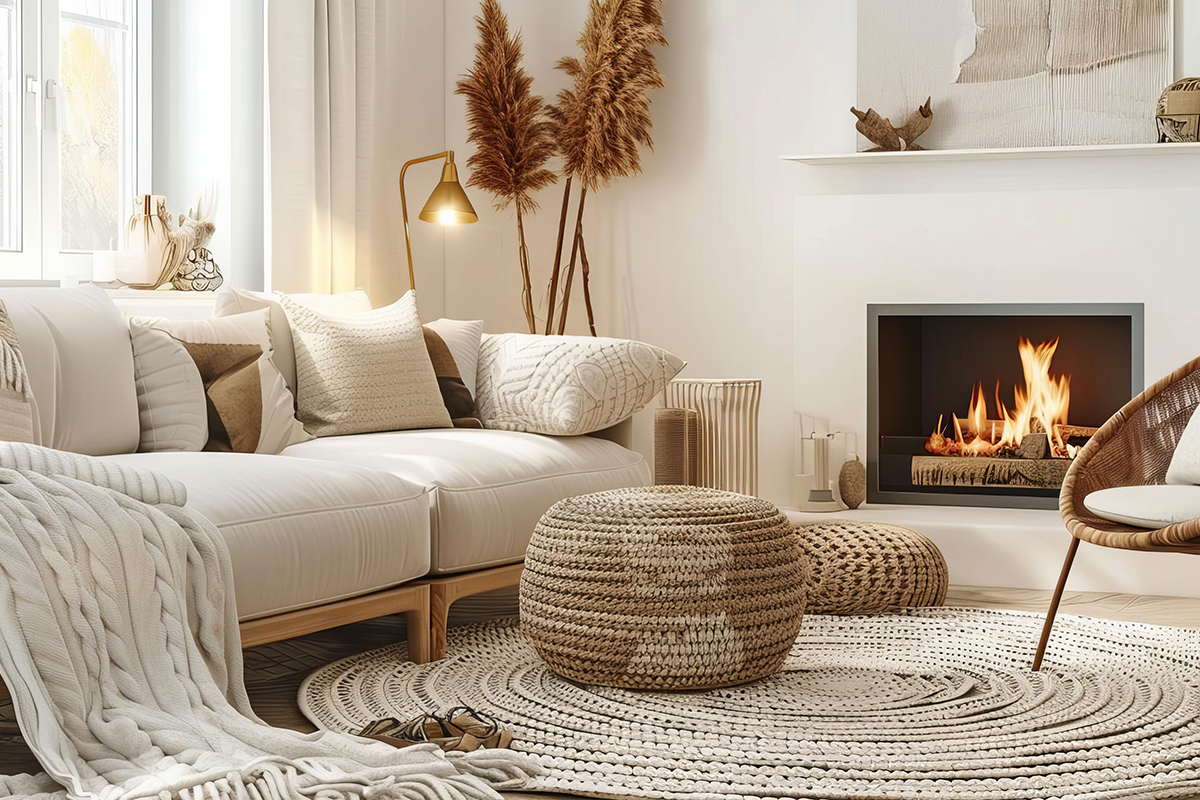Megatrend: Sustainable and healthy living
There are many different tastes when it comes to designing your own four walls: whether loud and flashy colors or subtle natural tones, whether wood, natural stone or plastered surfaces – anything goes. But regardless of the chosen material, design and style, today’s building owners and occupants pay more attention to an interior design that is both environmentally friendly and good for their own health.
Housing is a fundamental human need. Most people therefore attach great importance to individual, cozy and healthy furnishings in their home environment. Corona has intensified the craving for home comfort. “Cocooning”, i.e. the desire to stay “nested up at home”, combined with Scandinavian “hygge” design, which stands for a warm and cozy living atmosphere, continue to determine the furnishing style even after the pandemic has subsided. With more and more employees working from home, people are spending even more time within their own four walls than before. Whether building materials, surfaces or furnishings – consumers are placing a higher value on the careful selection of products. Sustainability has established itself as a megatrend of our times: Buyers are increasingly interested in supply chains and are eager to know, for example, where the wood for the parquet flooring was sourced or whether the furniture was produced in a climate-neutral way.
In view of people’s heightened environmental awareness and the new desire for coziness, it is not surprising that wood is a much-favored material. Classic parquet flooring is still in high demand, especially when firmly glued to the subfloor. For years now, oak has been the wood of choice for many houseowners. Apart from its distinctive grain, they appreciate its robustness, which also allows it to be used in areas previously considered unsuitable for parquet such as kitchens, bathrooms and hallways. Other popular types of wood for parquet include beech, ash, maple, cherry, walnut and birch. Featuring a long service life, natural stone tiles are also quite popular, especially in high-traffic areas such as corridors, hallways, cloakrooms and guest toilets. Ceramic tiles, recently also available in cool shades of blue and green, are mainly installed on bathroom walls and floors.
Wood is still the material of choice for indoor furniture. Especially solid oak and walnut are among the favored wood species. Modern kitchen design has been characterized for quite some time by dark tones and surfaces with a groove structure and vertical wood slats. Now, this style is also very much in vogue for dining and living rooms. It is accompanied by furniture with dark lacquered surfaces. As far as home textiles are concerned, there are two contrasting trends: natural tones such as earth or coffee brown on the one hand, fabrics in flashy shades of rose, pink and purple on the other.
These days, plaster surfaces dominate the walls of living rooms and individual rooms. Apart from smooth finishes, consumers now also fancy plasters with a striking texture. In addition to classic white, there is an increasing number of other plaster colors, ranging from muted shades of beige to bold colors.
The megatrend “Sustainability” goes hand in hand with the topic of “Healthy living”. A wide range of building materials and care products for surfaces and furniture is available in the market. In addition to the aforementioned plasters, these also include mortars, adhesives, varnishes, oils and waxes. Consumers are increasingly looking for low-emission products that are harmless to human health. These should not contain solvents or certain plasticizers and must also be free of volatile organic compounds (VOCs), which are hazardous to health. Consumers are well advised to use products carrying the EMICODE® seal of the GEV, the German Association for the Control of Emissions in Products for Flooring Installation, Adhesives and Building Materials. If professional craftsmen are hired to do the job, it is recommended to address the careful choice of building products before awarding the contract. Products that have been certified with the EMICODE® label undergo stringent testing. This guarantees the lowest possible VOC emissions for both installers and consumers. Manufacturers must repeatedly submit their products to unannounced spot checks. They may only advertise their products with the EMICODE® EC1 label if the emission quality has been recently tested and certified.
If you invest a little care in the design of your living space, you can make your own home not only climate-friendly but also resource-saving. With EMICODE®-certified products, homeowners and residents are on the safe side when it comes to healthy living and sustainability.

Photo: © Bijac/AdobeStock/GEV
Hygge style: Many people feel at home in a Scandinavian-inspired living atmosphere.
Wooden furniture and parquet flooring as well as fluffy fabrics contribute to the warm and cozy atmosphere.
Do You Have Questions?
If you have any questions on certain topics or want to contact us for another reason, please contact us by phone or email.
Phone: +49 (0)211 843 449 – 01
info@emicode.com
Share article on Social Media:
